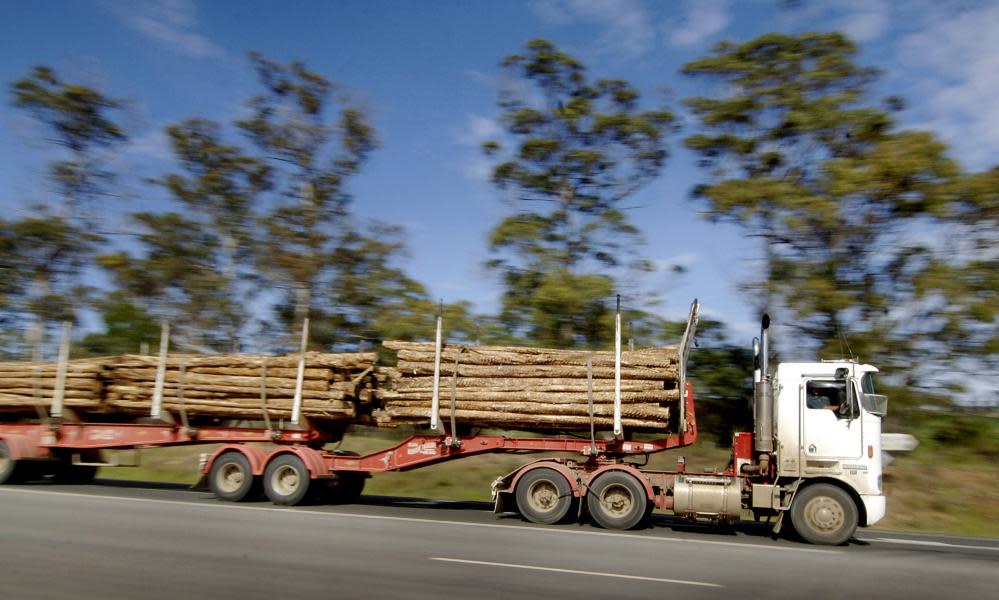Why reignite Tasmania's forest wars – to produce logs no one will buy? | Lenore Taylor

I thought I’d seen the turbid depths of policy driven by ideology and perceived political self-interest, but then I turned my attention back to the Tasmanian forest “wars”.
I first started reporting on this issue in 1988 when Bob Hawke and his environment minister Graham Richardson appointed a former judge, the late Michael Helsham, to investigate whether parts of the Tasmanian forest were worthy of world heritage listing. That resulted in the first of many agreements over the decades (in 1989, 1997, 2005 and 2013) in which federal and state governments paid hundreds of millions of dollars to “end the forest wars once and for all” by restructuring the industry and determining which forests should be protected and which should be open to logging.
The last one looked like it might finally make good on the promise, in part because the environmental arguments against logging native forest had reduced demand for timber sourced from them and the forest industry was ready to sue for peace. And also because everyone could see sense in ending the decades-long war of attrition.
But then the Hodgman Liberal government was elected in 2014 on a promise to “tear up” the deal, and duly introduced the Forestry (Rebuilding the Forest Industry) Act 2014.
It foreshadowed that 400,000 hectares of previously protected terrain – some of it the same high-conservation value forests that had been fought over, coupe by coupe, for decades – would be opened for logging, but not until 2020.
Now the state government is trying to change the law again to open up most of that land for logging from July next year, which happens to be the same year Tasmania is due to face another election.
The bizarre part is that the state-owned Forestry Tasmania didn’t ask to log the previously protected forests and most of the local sawmillers and wood processors say they won’t buy the timber from them.
But the state government seems determined to pick the fight anyway. The legislation passed the lower house last week and is heading for the upper house in April.
The ridiculous situation arose because last year Forestry Tasmania did say it would be unable to profitably source the 137,000 cubic metres of sawlogs which it is required by law to make available each year (whether or not anyone wants to buy them). It suggested producing 96,000 cubic metres instead.
But the premier, Will Hodgman, and the resources minister (and former federal senator), Guy Barnett, insisted the government would instead open most of the 400,000 hectares – which is basically all of the protected forests not covered by world heritage listing – to make sure the full amount could be provided. (Remember, the Abbott government tried and failed to delist 70,000 hectares of that world heritage listing back in 2014.)
At this point the story moves from ridiculous to truly absurd. If Forestry Tasmania (which from 1 July is going to be renamed “Sustainable Forests Tasmania”) were to formally oversee this new logging itself it may sour its bid to get forest stewardship council certification – an internationally recognised stamp of approval that has so far eluded it and that the industry knows is critical for its continued ability to sell timber at all.
So the government’s latest legislation requires that only “private operators” log in those areas. But the timber felled by those “private operators” would apparently still count towards Forestry Tasmania’s 137,000 cubic metre requirement. Nothing to see there.
And no matter who logs them, most of the businesses who might buy this timber are saying they definitely won’t be.
In fact the Forest Industries Association of Tasmania – the peak body for Tasmanian forest processors – has said it will join the environment movement in fighting the government’s plan as it now stands.
“We have advised the government that we are unable to support the bill ... as it will create unnecessary sovereign risk in log supply and problems in our markets and a return to the ‘forestry wars’,” said its chief executive, Terry Edwards.
The timber processor Ta Ann has said it wants no part of it, the state’s largest native forest sawmill Neville Smith Forest Products has warned the government the wood is likely to go unclaimed, and the timber processor Artec wrote to the minister pleading with him not to break the peace deal.
“Please be advised that Artec does not support this proposal unless it is signed off by all signatories to the Tasmanian Forest Agreement (TFA),” Artec wrote.
“We urge you not to jeopardise our international markets by taking action that would cause any of the signatories to the [peace deal] to walk away.”
So why would a government be reigniting the forest wars to force the logging of forests – including Weilangta, the north-east highlands, the Tarkine and Ben Lomond – to produce logs it seems no one wants to process or buy.
The government’s answer is that it wants to “save” 700 jobs. It says Forestry Tasmania has advised that “up to 700 jobs” could be lost if it reduces production (ever-handy qualifiers, those words “up to”) but the source of that calculation remains unclear. The Tasmanian government simply pointed to ministerial speeches and press releases making the claim.
The industry has been in long-term decline, the number of people employed halved between 2008 and 2014, and it seems unlikely there would be 700 jobs provided by the “private operators” making up the 40,000 cubic metres of timber – should any buyers for it eventually emerge.
The more likely motivation for the government’s plan is the well-worn tactic of stoking another Greens versus the forestry industry fight before the state election. But this time the battle is so counter-productive and its basis so flimsy that the forestry industry appears unwilling to rally to the cause.

 Yahoo News
Yahoo News 
